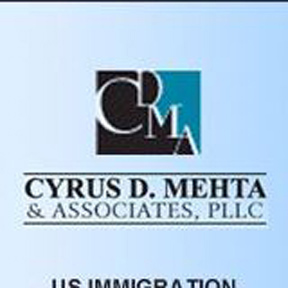The proposed rule also resolves another uncertainty.
H-4 spouses who were able to file an I-485 adjustment of status application for permanent residency could always apply for work authorization by virtue of filing the I-485 pursuant to 8 CFR 274a.12(c)(9).
What was not clear is whether such H-4 spouses forfeited their right to remain in H-4 status if they engaged in work pursuant to an employment authorization under 8 CFR 274a.12(c) (9) while their I-485 applications remained pending. The proposed rule in footnote 13 appears to suggest that they did not violate their status.
The rule will create 8 CFR 274a.12(c) (26) as a basis for H-4 spouses to apply for work authorization, and suggests that H-4 spouses who previously availed of work authorization under 274a.12(c) (9) can also avail of work authorization under 274a.12(c) (26).
If the spouse lost H-4 status by engaging in employment pursuant to 274a.12(c)(9), it would not be possible for the H-4 spouse to now take advantage of new 274a.12(c)(26).
As with the H-1B itself, the proposed H-4 rule recognizes and diffuses the tension between the constraints of nonimmigrant visa categories, such as the H-1B which is employer-specific or the H-4 that hitherto was not allowed to sustain employment, and the adjustment of status provision in INA Section 245 that grants open market employment.
Many advocates feel that the rule did not go far enough and could have granted work authorization for all H-4 spouses without condition. After all, the L-1 and E visas, allow dependent spouses to apply for work authorization immediately upon being admitted under those statuses.
On the other hand, the authorization to grant spouses of L and E nonimmigrants work authorization stems from Congress, although J-2 spouses who do not support the principal J-1 exchange visitor work solely through regulation Congress has not specifically authorized work authorization for H-4 spouses, although there is authority in the INS, as discussed, which still provides such authority to the DHS.
While this is fair criticism, the Administration also faces withering opposition from anti-immigration advocates, including the likes of Senator Charles Grassley (R-IA), who question whether there is any authority at all to grant work authorization. Hence, the middle ground to grant work authorization benefits to H-4 spouses who are already on the pathway to permanent residence but are caught up in the backlogs.
The proposed rule also acknowledges that this ameliorative measure is consistent with AC 21, which was enacted so that the principal H-1B spouses could continue to remain in the United States beyond the sixth year, and thus avoid disruption to US employers.
Limiting work authorization to H-4 spouses who are on the pathway to green cards can also more easily insulate such a rule from challenges in federal court.
Still, even under this logic, it would be preferable if H-4 spouses are able to apply for work authorization as soon as a labor certification is filed on behalf of the principal spouse. There is no need to pre-condition the grant of employment authorization upon the approval of the I-140 petition, given the delays in the PERM labor certification process, which can take two years if the application is subject to an audit or to supervised recruitment.
The rule also recognizes that an H-4 can apply for employment when a labor certification is filed, but only when it is used to obtain an H-1B extension beyond the six years under AC 21. It is illogical to only allow the H-4 to apply for a work permit when the principal spouse relies on the labor certification to seek an extension beyond six years, and not otherwise.
Furthermore, while the majority of H-1B visa holders may be sponsored by employers through I-140 petitions, some H-4 spouses may also be sponsored by prospective employers in their own right. H-4 spouses who are directly sponsored by employers under an I-140 petition should also be allowed to apply for employment authorization.
And why limit this to only I-140s? Some H-1Bs or H-4s are also sponsored by qualifying family members through an I-130 petition. They too are Americans in waiting.
Finally, children in H-4 status have been left out and do not have the ability to apply for work authorization. Children of L-1 and E-1 visa holders are also not allowed to work, although children of J-1 visa holders can work. On the other hand, H-4 children can obtain work authorization benefits if they switch to F-1 student visa status.
We continue to call upon Congress to enact comprehensive immigration reform, including the expansion of H-1B visa numbers. Any administrative initiative, however meaningful or positive, and this one is both, is, by its very nature, both tentative and subject to reversal. Only an INA worthy of the many difficult but exciting challenges that America must confront and master in the 21st century can provide the nation with the vision that it needs and deserves.
Yet, until that happy day comes, the USCIS can and must do justice with the law that we all have. That is what has finally happened with H-4 spousal employment. Not a full and complete step certainly, but a stride forward towards a better day.
Something else needs to be said before we go. What we in the United States are dealing with is a global battle for talent. More than any other single immigration issue, the H-1B visa debate highlights the growing and inexorable importance of a skilled entrepreneurial class with superb expertise and a commitment not to company or country, but to their own careers and the technologies on which they are based.
They have true international mobility and, like superstar professional athletes, will go to those places where they are paid most handsomely and given a full and rich opportunity to create. We are no longer the only game in town.
The debate over the H-1B is, at its core, an argument over whether the United States will continue to embrace this culture, thus reinforcing its competitive dominance in it, or turn away and shrink from the competition and the benefits that await.
No decision on H quotas can or should be made separate and apart from an answer to a far more fundamental question: How can we, as a nation, attract and retain that on which our prosperity most directly depends, namely a productive, diverse, stable and highly educated work force irrespective of nationality and do so without sacrificing the dreams and aspirations of our own people whose protection is the first duty and only sure justification for the continuance of that democracy on which all else rests? This is the very heart of the H-1B maze.
An immigration system that restricts the importation of human capital hurts American competitiveness every bit as much as high tariffs or artificial subsidies. In each case, the controlled but predictable flow of capital across national boundaries is the lubricant of economic activity. Preserving the H-1B as an instrument of job creation for Americans while enhancing the ability of foreign professionals to make our cause their own is an essential and irresistible component of comprehensive immigration reform.
Allowing some, though not all, H-4 spouses to work is a key step in this direction. The DHS estimates that 100,600 H-4 spouses will apply for work authorization in the first year and 35,900 will initially apply in subsequent years.
For those concerned about the impact on the US labor market, these H-4 spouses would in any event be able to work once the principal H-1B spouse applied for adjustment of status.
They will also be able to contribute to the US economy, and the incentive provided to them will also encourage the H-1B spouse to stay on in the United States. We have every good hope that is will lead to ever more confident strides in the days to come.
It is in the very nature of reform in the liberal tradition for progress to be incremental. If the Chinese maxim that “the journey of a thousand miles begins with a single step,” retains its power to teach, as we believe it surely does, we who legitimately want much more than the H-4 spousal regulation offers should not, even for a single moment, divert our eyes from the very real progress that has now been taken.
(Guest writer Gary Endelman is the Senior Counsel of FosterQuan)
Concluded
Gary Endelman & Cyrus D. Mehta







